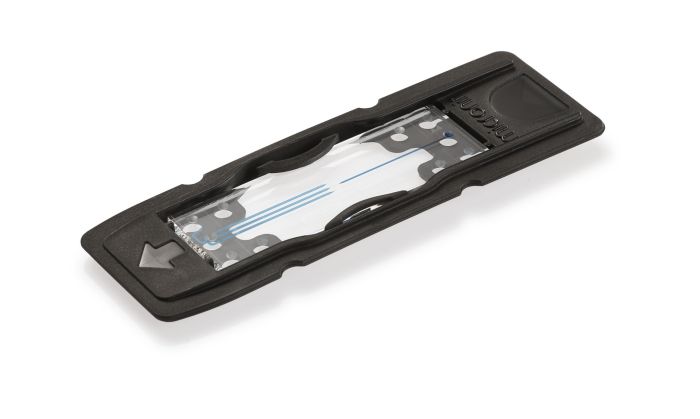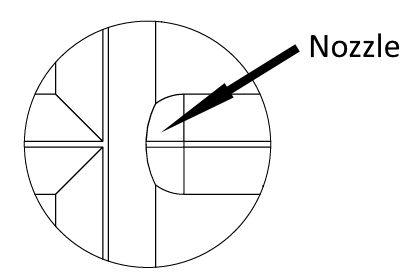shopping_basket
Focused flow droplet generator - nozzle 20µm - uncoated - topconnect [Beta]
SKU
11002137
Availability:
check_circle In stock
$660.28
per pack of 3
Pack of 3 focused flow droplet generator chips with a nozzle size of 20µm and without coating (hydrophilic surface). For generation of oil-in-water droplets or emulsions. For use in combination with our topconnect interfacing.
Recommended reference droplet size range: 20-40µm
For creating oil-in-water droplets.
The reference droplet size range is based on a reference experiment with Silicone oil 5cSt and DI water combined with 2% v/v Tween 20 or Tween 80.
--The characteristics of this products are not yet fully known, for that reason it's labled as Beta product--
Pack of 3 focused flow droplet generators. The channels have an oval shape and the design fetaures a nozzle with a height of 20µm and a width of 29µm which is located in the exit channel at the junction.
Around the junction, the channels have a height of 33µm and a width of 38µm. The inlet/outlet channels have a height of 33µm and a width of 300m.
The design includes on-chip filters. It's recommended to also use external .
| Unit of measurement | pack of 3 |
|---|---|
| Coating | No coating (hydrophilic) |
| Alternative item references | 02137, DGFF.20 |
| Interface type | Topconnect |
| Chip material | Borosilicate glass |
| Number of inlets | 2 |
| Number of outlets | 1 |
| Fluids | Oil droplets inside a water flow (uncoated, hydrophilic surface) |
| Nozzle size | 20µm |
| Icon | Label | Description | Type | Size | Download |
|---|---|---|---|---|---|
 | DGFF.10 - Drawing | Drawing for 10µm Topconnect Focused Flow Droplet Generator. Items 01341 and 00935. | 159.2 KB | Download |
Customer Questions
We found other products you might like!
- Droplet generation setup - topconnect (no pumps included)
From $2,132.84
To $12,779.65




